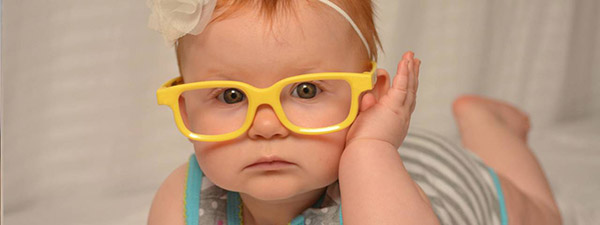
Q: We hear a lot about “seeing your eye doctor regularly.” In school aged children, ages 5 through 17, what does regularly mean?
A: The American Optometric Association (AOA) recommends that children be seen at least once between the ages of 3 & 5, once prior to beginning first grade, and annually thereafter.
Q: What about pre-schoolers? Are there signs parents should look for that would indicate a trip the optometrist is necessary?
A: As mentioned above, all children should be seen by an optometrist at least once between the ages of 3-5. In addition, if a parent notices anything abnormal such as, his/her child excessively rubbing his/her eye, avoiding using one of his/hers eyes or an eye that is turning in or out, that child should be brought to an optometrist.
Q: Because many children may be too young to read, how is an eye exam conducted if they cannot read a Snelling Chart?
A: Specific charts are used that do not contain letters. Depending on the age of the child, we can use either shapes or pictures.
Q: One of the greatest tasks of a school-aged child is learning to read and in older children, the amount of reading required. What should parents be on the lookout for concerning their child’s reading and potential vision problems?
A: It’s important to note if your child appears to be avoiding reading or stopping to read after only a few minutes. Sometimes this is an indication that there is an eye problem and not necessarily a reading or comprehension problem.
Q: We often discuss vision problems as they relate to sitting in a classroom, but what about the playground or vision acuity’s effect on socialization and play?
A: If a child is nearsighted, any activity that requires good distance visual acuity may be affected. This may put your child at a disadvantage in whatever activity in which he/she is involved.
Q: Today it seems that many children are very quickly diagnosed as learning disabled or dyslexic. How does vision play into the problems and what are the differences?
A: Learning disabilities and dyslexia are not considered vision problems. However, children with vision or, more accurately, binocular vision and/or accommodative problems, may exhibit symptoms that may appear as learning disabilities. It is, therefore, imperative that children who are having learning issues be evaluated for any eye condition as PART of the evaluation process.
Q: We have many choices today to correct our vision. What do you recommend as the earliest age for contact lenses?
A: Wearing contact lenses is a responsibility. Children who are responsible enough to take care of their contact lenses and ensure proper contact lens hygiene are old enough to wear contact lenses.
Q: Kids can be hard on glasses. Are there effective glasses for children today that last?
A: There are frames that are flexible and resistant to rough and tough play. In addition, lenses can be made with impact resistant material and scratch resistant coatings, both of which we recommend for all of our pediatric patients.
Q: Vision Therapy appears to be making a comeback and is being utilized by some students to address their vision problems. Can you talk about vision therapy and when it is right for your child?
A: Vision therapy is a very appropriate and effective treatment for certain eye conditions relating to eye muscle problems, not visual acuity problems. Vision therapy involves training and strengthening the eye muscles to perform specific tasks, much like physical therapy trains and strengthens the muscles to work properly.
